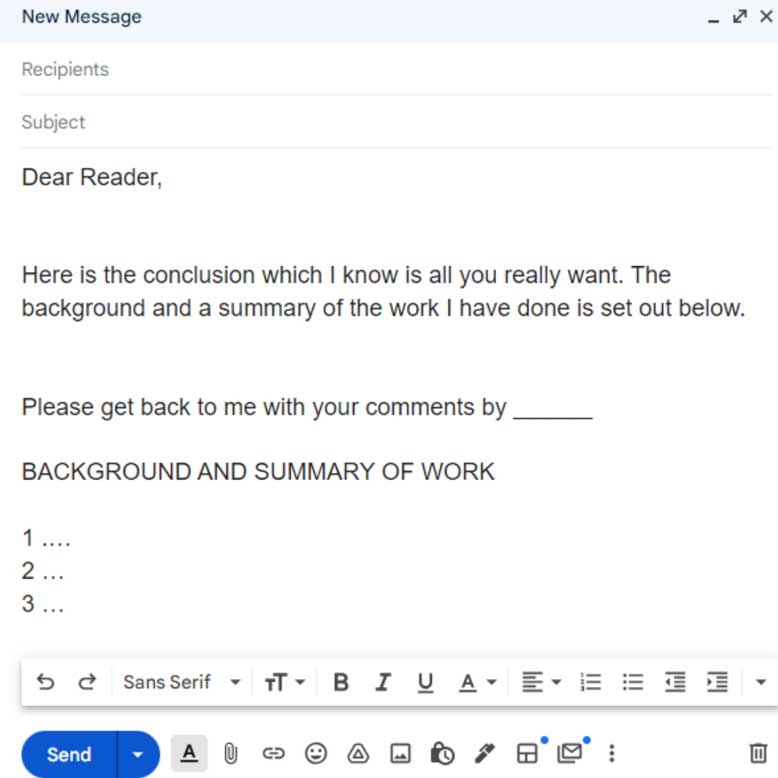Email Ethics for Lawyers: How to Navigate the Perils of Email
Posted on Sep 19, 2022

In this article, we’ll explore 3 ethical pitfalls of emails - and what you can do to avoid them.
Pitfall 1: Email confidentiality breaches
Oh, no! You've just discovered that an email you sent to a client - containing sensitive and confidential information - was sent to the wrong email address! This is a surprisingly common scenario with potentially serious consequences.
Luckily, there are two easy steps lawyers can take to reduce the risk of breaching email confidentiality.
Never trust autofill: Sometimes, the autofill feature fills in the wrong recipient name. So before you hit "send", double-check the "send to" field to ensure it's the correct email address.
Start new email chains regularly: When you've emailed your client regarding an issue that's now resolved, always start a new email chain for your next email. This step is particularly important if you have copied multiple people in the email.
By implementing these two steps - and making them a habit - you'll minimise the risk of misunderstandings and damaging ethical transgressions.
Pitfall 2: Not managing client expectations
Clear, honest, and timely communication is a crucial aspect of client relationships - and it’s also a critical part of email ethics. However, poor communication is one of the greatest sources of complaints made against lawyers according to the 2020-2021 Annual Report of the Office of the Legal Services Commissioner.
One of the best ways to mitigate this is to think about the person who will be reading your email as you write it. Using a "reader-centred" approach will make it easier for the person receiving your email to understand and action it. Some tips for communicating more effectively by taking a reader-centred approach include:
Use clear subject lines: Make sure your subject line summarises the email content and encourages the reader to open it. It should also clearly state any deadlines or time limits.
Focus on the key message and follow the "F pattern": Always put critical information at the beginning of a paragraph. Email readers tend to skim over text rather than reading every word, so by placing the core message early on in your text, readers are more likely to process this information.
Be clear about your turnaround time: When do you need your client to respond? And when will you respond to their emails? Can your client expect you to reply to an email outside of office hours? If the answer is no, you must be clear about this. In your initial meeting with a client, set the ground rules for your email response time - as well as what you expect from them.


No one likes unmet expectations. By communicating clearly, you can avoid unnecessary friction while upholding your duty of competence and due diligence. Additionally, you're more likely to successfully manage, meet - and even exceed your client's expectations.
Pitfall 3: Failure to manage common cyber threats
Multiple technological risks are associated with email use - especially concerning cyber security. Cybercriminals use numerous strategies, such as sending phishing emails or spam with malicious software, to target lawyers to gain access to confidential client data or funds via email. And they are becoming savvier every day. Actively taking steps to protect yourself - and your client - against common cyber threats is a vital part of your ethical obligations while working with email. These steps include:
Practice good password hygiene: An excellent password is your first line of defence to prevent unauthorised access to your emails. Use a password manager such as LastPass to help create strong and secure passwords.
Passwords are like underwear: don't let people see it, change it very often and you shouldn't share it with strangers.
Chris Pirillo
Grow cyber resilience: Investing in cyber resilience training is the best safeguard from cyber security breaches, as a large number of breaches result from human error. Learning to manage and mitigate some of the most common cyber risks is a critical success factor for all lawyers - particularly for working with email.
The consequences of cyber security breaches can be devastating for clients, lawyers, and law firms. And as the nature of cyber risks is becoming more sophisticated, lawyers can no longer afford to think, "this won't happen to me".
It’s crucial for lawyers to understand how they can best manage and uphold their ethical obligations while working with email. Check out our new interactive legal CPD course “Ethics and Email” to learn how you can best navigate the ethical risks of email use. You can also check out our best selling course “Working Effectively with Email” to learn how to learn practical strategies to help you use email more effectively everyday.
Other resources you might like:
- [CPD Course] Cyber Risk for Lawyers and Law Firms
- [Insight] Leaders in Law Interview Series: Simone Herbert-Lowe
- [CPD Course] What Can Hollywood Teach Us About Legal Ethics?




